Key Takeaways:
- Fleet telematics provides comprehensive, real-time data about your fleet’s activities, locations, and conditions.
- The three fundamental technologies at the core of telematics include onboard diagnostic equipment, GPS, and wireless communication.
- The three main challenges of fleet telematics are its initial costs, potential privacy concerns, and data overload.
There’s a lot of talk about telematics, an exciting technology that promises to revolutionize your fleet management game and help you make the most out of your assets.
But what exactly is it? Is it as impressive as it sounds, and how does it even work?
These are precisely the questions we’ll be addressing in this article.
We dive deep into the nitty-gritty of telematics, exploring its benefits, drawbacks, and everything in between.
Then, by examining it from all these different angles, we’ll try to determine whether investing time, money, and effort into implementing this technology in your day-to-day is truly worthwhile.
Let’s get started.
In this article...
What Is Fleet Telematics
Put simply, telematics is a system for monitoring cars, trucks, equipment, and various other types of assets using telecommunications technology.
This technology provides comprehensive, real-time data about your fleet’s activities, locations, and conditions, all with the goal of optimizing your fleet management efforts and improving resource allocation.
The specific use cases for telematics are numerous, says David Broadwater, a Holman fleet management services manager:
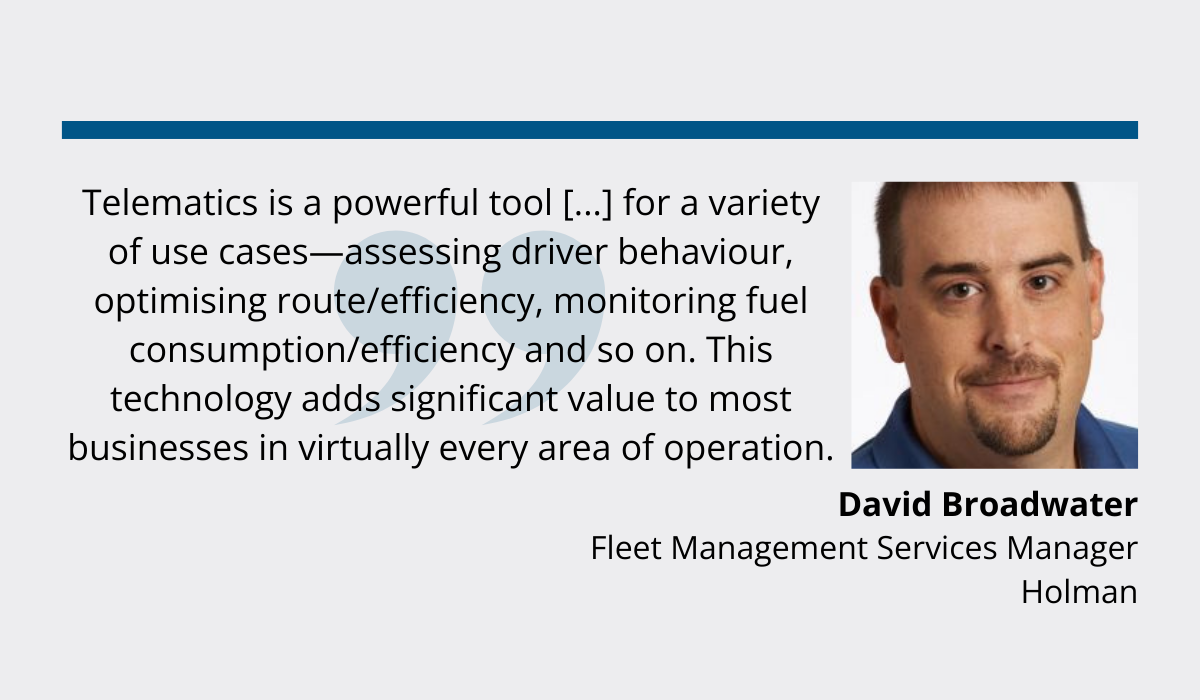
From tracking driver behavior to boost their safety, to keeping tabs on fuel consumption to slash costs and improve fuel efficiency, these systems can address a wide variety of operational needs.
Here are a couple more examples of telematics applications that Broadwater didn’t cover, just to give you an idea of how versatile these solutions truly are:
- Tracking vehicle locations and implementing geofencing to prevent asset loss and theft
- Tracking vehicle health to optimize maintenance strategies
- Tracking utilization and driver behavior to assess insurance risk and provide support in legal matters
The bottom line is this: telematics is an invaluable tool in all areas of fleet management, making it possible for managers to know their fleets inside out.
Are drivers adhering to safety protocols?
Can the budget be stretched a bit further by cutting down on fuel costs, and is that pricey piece of equipment idling a bit too much?
Telematics systems have all the answers, unlocking new levels of efficiency and boosting overall productivity.
In fact, did you know that, according to Verizon Connect, telematics can increase vehicle uptime by up to 25%?

Let’s face it, your fleet was no small investment.
It’s only natural you want to make every dollar count.
This is precisely the ultimate role of telematics: squeezing every last drop of your fleet’s potential while keeping your drivers safe and your bottom line healthy at the same time.
Telematics vs GPS: What’s the Difference
In the context of fleet management, the terms telematics and GPS tracking are often used almost synonymously.
However, the two are definitely not the same.
GPS (Global Positioning System) uses satellite signals to calculate the whereabouts of anything equipped with a GPS receiver, whether it’s a cell phone, a dog collar, or, of course, a company vehicle.
Consequently, it serves as a vital component of telematics, providing precise location and time details about your assets.
In short, GPS monitoring is all about the “where” and the “when.”
Telematics, on the other hand, has a much broader scope.
It gathers data through various sensors installed in your vehicles, telling you all about how each asset is used and by whom, on a minute-by-minute basis.
More specifically, through this technology, you gain the ability to monitor:
- Vehicle speed
- Odometer readings
- Diagnostic trouble codes
- Fuel consumption
- Instances of harsh braking
- Environmental conditions inside the vehicle, such as temperature or vibration
Such comprehensive data is precisely what makes telematics invaluable for modern-day fleet management.
It helps unlock complete asset visibility, facilitating informed, data-driven decision-making and resource allocation in the process.
But there is another important difference between GPS and telematics.
The former simply relays vehicle location.
The latter, in contrast, not only collects and transmits asset information but can also analyze it, even further deepening your understanding of your fleet.
To put it simply, while GPS can tell you, for example, if your drivers veered off their designated route, telematics can map out the best route considering everything from past trips to the weather forecast and traffic conditions.
So think of it like this: GPS is just one piece of the puzzle, but telematics paints the full picture of your fleet, allowing you to track valuable vehicle utilization metrics that would otherwise stay inaccessible and unattainable.
Technologies Used In Fleet Telematics
By now, you surely must be curious about how exactly these powerful systems work.
Well, at the core of telematics, there are three fundamental technologies:
- Onboard diagnostic equipment
- GPS
- Wireless communication
While a multitude of other technologies—including mobile apps, mapping engines, and satellite data communication networks—also play a role in providing you with fleet data and facilitating fleet management, these three stand as the primary components that make telematics possible.
But how does it all come together?
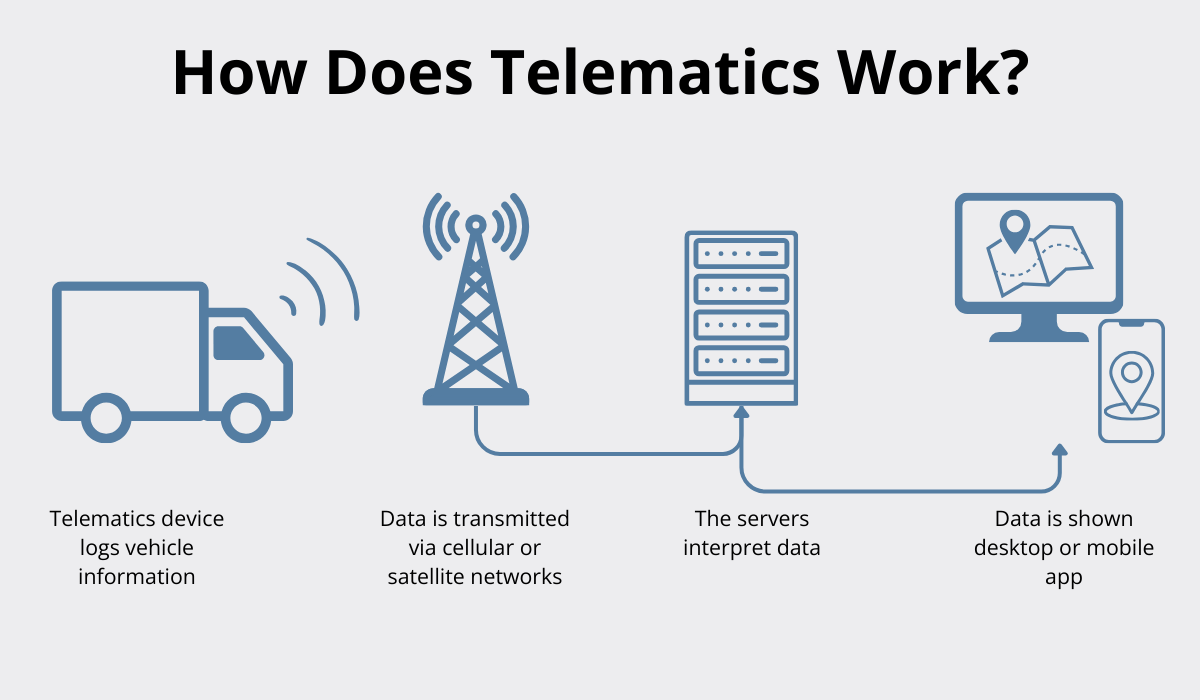
For starters, onboard diagnostic equipment, consisting of different sensors and similar hardware, is installed in your vehicles.
Once activated, these devices start to send, receive, and store various telemetry data, such as speed, fuel consumption, engine performance, mileage, and more.
At the same time, GPS trackers do their own part, capturing latitude and longitude coordinates, as well as elevation to determine the exact location of your fleet at any given moment, until it appears in your mobile app, depicted like this:
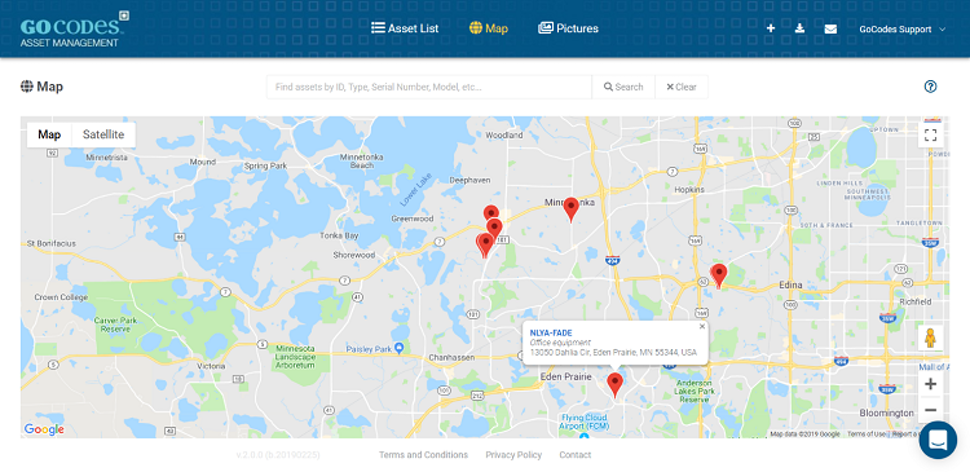
How do they communicate this information?
That’s where wireless communication tech steps in, be it through cellular, satellite, or Wi-Fi networks, serving as a bridge between these data-capturing devices and the software.
No signal?
No problem.
In zones with no wireless coverage, such as rural areas, asset information can be stored on the in-vehicle device until connectivity is restored, a process known as store-and-forward.
Finally, once the information reaches the servers, it’s interpreted and displayed in the form of updates.
These updates can then be viewed through either web-based or mobile application-based tools for data visualization and manipulation.
All in all, it’s nothing short of miraculous to witness these technologies coming together and forming such powerful systems capable of compiling and deciphering this rich fleet information.
In comparison, fleet management pre-telematics seems like a cumbersome process, plagued by human error and inefficiency.
Makes you wonder how we ever got by without this technology, doesn’t it?
Challenges of Fleet Telematics
Now, we promised to give you both the good and the bad, but thus far, we’ve only discussed the advantages of telematics.
It’s time we delve into some common challenges associated with this technology and explore potential solutions.
Initial Cost
Getting started with telematics can seem like a sort of leap of faith.
It requires an initial investment in hardware, software, as well as installation, which can present a significant barrier to adoption, particularly for smaller businesses or those with tight budgets.
Unfortunately, this challenge isn’t unique to telematics, either.
In fact, it’s a common theme across the construction sector.
According to the RICS (Royal Institution of Chartered Surveyors) 2023 report on digitalization in construction, cost and effort stand out as the primary obstacles preventing companies from integrating technology into their workflows.
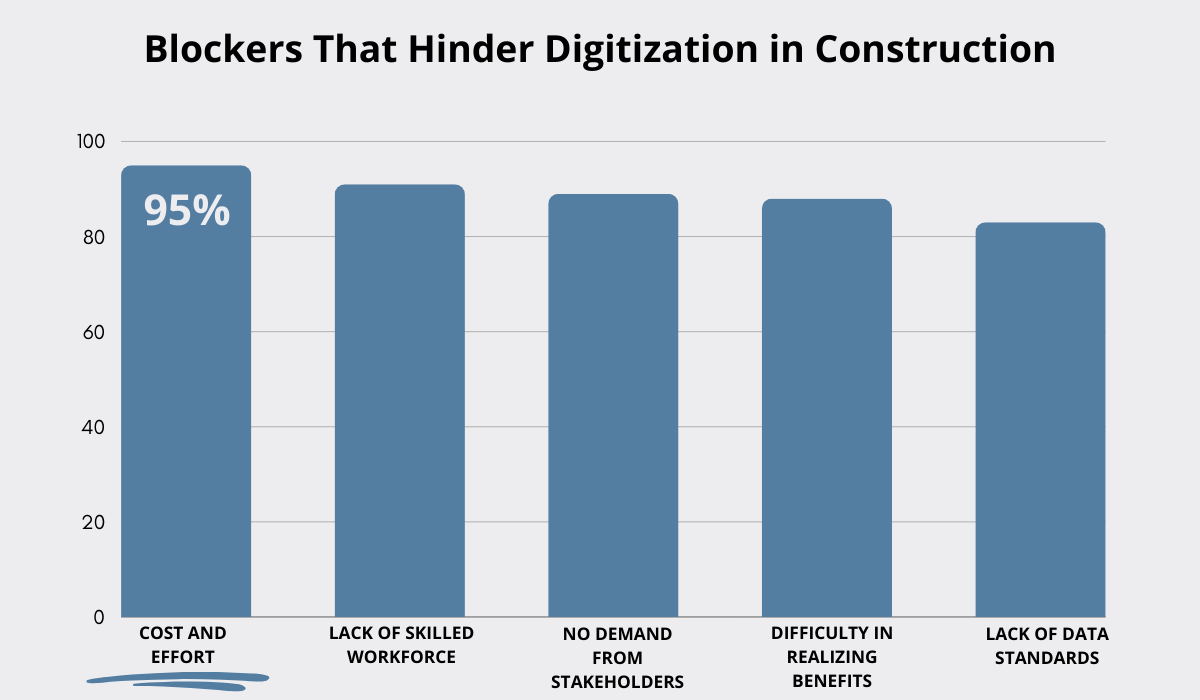
And who could blame them?
These software solutions often come with hefty price tags, leaving businesses to wonder if the potential benefits are worth the money.
Fleet managers are no strangers to this predicament.
When it comes to investing in telematics systems, they act with caution—even the software vendors will tell you as much.
Mayank Sharma, head of global product management & UX at Teletrac Navman, admits that discussions about return on investment are quite commonplace with their customers:
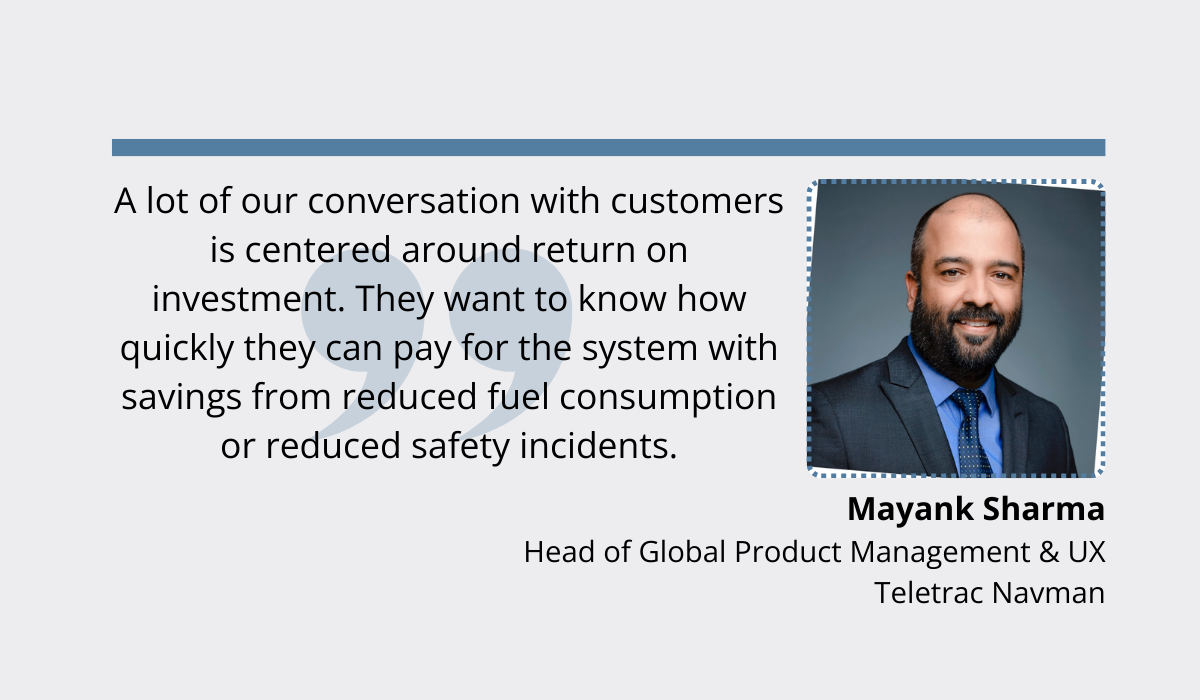
Companies want to be assured that the system they buy will eventually pay for itself, and rightfully so.
The good news is that you don’t have to commit to any kind of purchase blindly.
Most software providers nowadays offer free trials, giving you the chance to test-drive the system and see if it’s worth your while.
Some let you borrow hardware as well, reducing the overall risk even further.
So, don’t hold back. Take full advantage of these trials and explore the systems you’re interested in.
Once you find the right one for your needs, you can confidently take the plunge and go ahead with the purchase.
Privacy Concerns
Telematics systems, with their capability to track vehicle locations, speed, and operator behavior, may raise some privacy concerns among drivers.
Sure, the majority probably won’t object, but there will still be those who demand absolute privacy, regardless of potential advantages.
After all, driver privacy is undeniably a sensitive issue.
For instance, Dale Porfilio, chief insurance officer at the Insurance Information Institute, highlights that drivers often reject participation in usage-based insurance programs that use telematics precisely due to such concerns:
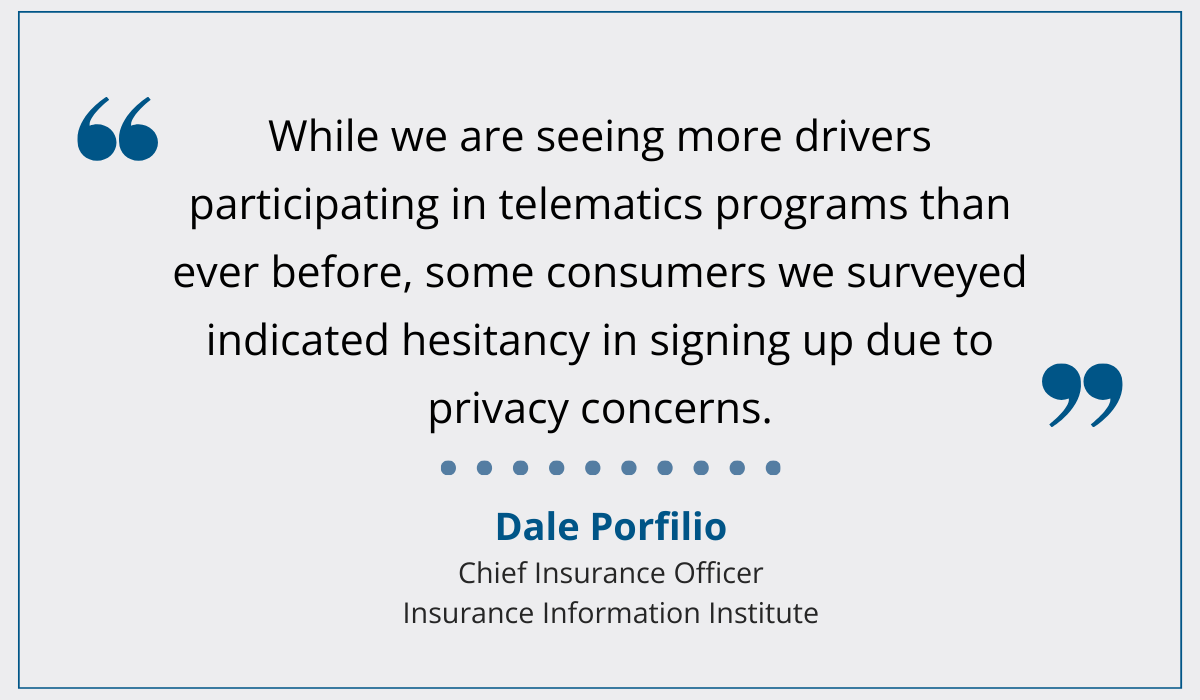
Although these programs track driving behaviors to reward safe practices with lower insurance premiums, Porfilio notes that many fail to recognize their benefits and instead feel they intrude on their privacy.
Now, private individuals have the full right to opt out of such programs, but it’s crucial to remember there’s a world of difference between personal and work-related driving.
So, if you plan on implementing telematics to monitor driver behavior, it’s important to set the record straight.
Make it crystal clear to your employees that personal activities outside of work are not of interest and won’t be monitored.
Telematics are intended to safeguard company vehicles, ensure proper use, and promote safe driving—nothing more, nothing less.
Your drivers should also understand that these systems aren’t punitive but rather educational tools aimed at boosting their performance.
Jason Hurdis, a global market professional at Caterpillar, agrees.

He says that drivers rarely make mistakes on purpose anyway, but these solutions can shed light on some inefficient and unsafe driving practices they weren’t even aware of.
Overall, when it comes to addressing this challenge, transparency and consent are your two biggest allies.
Informing the team about data collection, explaining its purpose, and obtaining explicit consent will help you establish trust and make sure everyone’s on board with this new technology.
Additionally, you may want to consider using telematics with a flexible privacy platform.
Such solutions allow you to define what kind of data you want to collect yourself, enabling you to reap all the perks of the technology while simultaneously respecting the legitimate privacy concerns of your team members.
Talk about a win-win scenario!
Data Overload
One of the greatest strengths of telematics—providing detailed fleet data—can potentially turn out to be a significant weakness, too, especially if you’re unsure how to use that data effectively.
Let’s face it: sorting through a vast sea of information can be extremely time-consuming and labor-intensive, ultimately hindering productivity rather than increasing it.
Take diagnostic trouble codes, for example.
While they are invaluable for diagnosing and addressing vehicle issues, your telematics system detecting thousands of them every week could easily overwhelm maintenance personnel, says Jon White, Co-founder of CST Fleet Services and President of Jon White Inc.
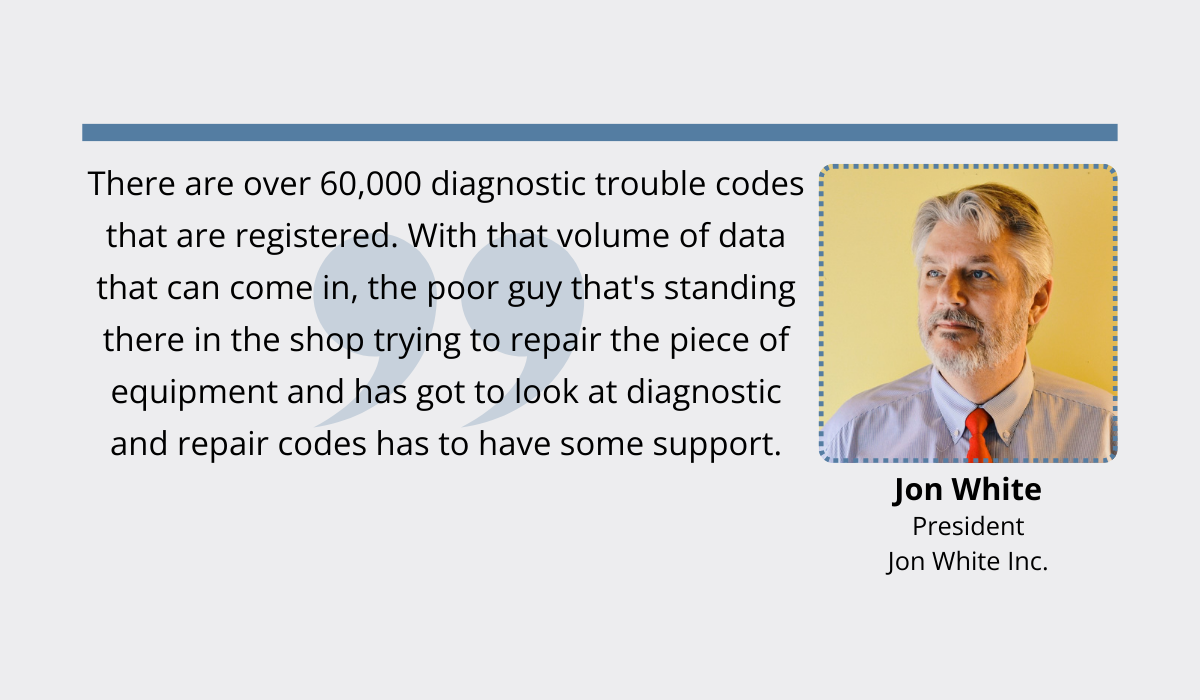
So, instead of streamlining vehicle upkeep, you end up with an even slower and more cumbersome process.
Still, worry not. There are two steps you can take to mitigate the problem of data overload.
First, you need to determine what you want to get out of your telematics solution.
Do you aim to, for instance, enhance the maintenance process, reduce fuel costs, or maybe prevent theft?
Tony Nicoletti, director of sales and business development at DPL America, emphasizes that understanding your fleet goals will help you define what kind of data you should track:
It is tempting to think, ‘I want as much data as I can get […] however, the reality is that many equipment owners are not yet capable of properly digesting available data and often become overwhelmed by it […] If your goal is to improve billing and service scheduling, then you may only need location and usage monitoring […] If you are concerned about theft or suspicious customers, you probably do not need a data-intensive hardwired product, but rather something you can ‘slap and track’ […]
He warns against the misconception that more information always means better outcomes, advocating instead for a focus on your specific needs and circumstances.
Secondly, it’s important to opt for solutions with robust data analytics and reporting capabilities.
These tools sift through the data, analyze it, and offer actionable insights in the form of diverse reports on fuel efficiency, driver behavior, vehicle utilization, and more.
This, in turn, helps you pinpoint areas for improvement quickly and easily as well as guides your decision-making.
At the end of the day, data is the key ingredient in improving your fleet management game, there’s no doubt about it.
However, for your fleet insights to be genuinely beneficial, you have to harness the right data, the right way, armed with the right tools.
Conclusion
Now, the time has finally come to answer the question we posed in the introduction: Is telematics truly worth the investment?
Our verdict? Absolutely.
Still, this isn’t to say that just any software solution will work for you. You must first carefully consider which fleet metrics you aim to improve and then look for the system that will eventually get you there.
And guess what?
Your journey towards better fleet management doesn’t end here.
Besides finding the right system, it’s equally important to consistently monitor its performance and assess whether or not it truly meets your evolving needs and expectations.
And then, once you and your team finally get the hang of it all, you’ll start to notice significant improvements that will make all the hard work more than worthwhile.




